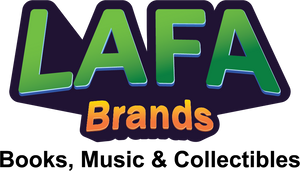
White Trash
A New York Times Notable and Critics’ Top Book of 2016
Longlisted for the PEN/John Kenneth Galbraith Award for Nonfiction
One of NPR's 10 Best Books Of 2016 Faced Tough Topics Head On
NPR's Book Concierge Guide To 2016’s Great Reads
San Francisco Chronicle's Best of 2016: 100 recommended books
A Washington Post Notable Nonfiction Book of 2016
Globe & Mail 100 Best of 2016
“Formidable and truth-dealing . . . necessary.” —The New York Times
“This eye-opening investigation into our country’s entrenched social hierarchy is acutely relevant.” —O Magazine
In her groundbreaking bestselling history of the class system in America, Nancy Isenberg upends history as we know it by taking on our comforting myths about equality and uncovering the crucial legacy of the ever-present, always embarrassing—if occasionally entertaining—poor white trash.
“When you turn an election into a three-ring circus, there’s always a chance that the dancing bear will win,” says Isenberg of the political climate surrounding Sarah Palin. And we recognize how right she is today. Yet the voters who boosted Trump all the way to the White House have been a permanent part of our American fabric, argues Isenberg.
The wretched and landless poor have existed from the time of the earliest British colonial settlement to today's hillbillies. They were alternately known as “waste people,” “offals,” “rubbish,” “lazy lubbers,” and “crackers.” By the 1850s, the downtrodden included so-called “clay eaters” and “sandhillers,” known for prematurely aged children distinguished by their yellowish skin, ragged clothing, and listless minds.
Surveying political rhetoric and policy, popular literature and scientific theories over four hundred years, Isenberg upends assumptions about America’s supposedly class-free society––where liberty and hard work were meant to ensure real social mobility. Poor whites were central to the rise of the Republican Party in the early nineteenth century, and the Civil War itself was fought over class issues nearly as much as it was fought over slavery. Reconstruction pitted poor white trash against newly freed slaves, which factored in the rise of eugenics–-a widely popular movement embraced by Theodore Roosevelt that targeted poor whites for sterilization. These poor were at the heart of New Deal reforms and LBJ’s Great Society; they haunt us in reality TV shows like Here Comes Honey Boo Boo and Duck Dynasty. Marginalized as a class, white trash have always been at or near the center of major political debates over the character of the American identity.
We acknowledge racial injustice as an ugly stain on our nation’s history. With Isenberg’s landmark book, we will have to face the truth about the enduring, malevolent nature of class as well.
- In Stock Out of Stock
- Viking
- 9780670785971
- June 21, 2016
- Stock Photo
- 480
- L 24.2cm x W 16.8cm x H 3.7cm
Book Condition Notes
New: A brand-new, unused, unread copy in perfect condition.
Like New: A copy that looks unread and in perfect condition. Dust jacket is intact, with no nicks or tears. The spine has no signs of creasing. Pages are clean and are do not have any notes or folds of any kind. May have a remainder mark. (usually black or red in colour and is usually a dot or line on the bottom of the book on the page edges).
Very Good: A copy that has been read but is in great condition. May have slight cosmetic defects such as marks, wears, cuts, bends and crushes on the cover, pages, spine and dust jacket if applicable. Pages and dust cover (if applicable) are intact and do not have any notes or highlighting. The spine remains undamaged. May have a remainder mark (usually black or red in colour and is usually a dot or line on the bottom of the book on the page edges).
Good: A copy that has been read but in clean condition. The spine, cover, pages and dust jacket (if applicable) may show signs of wear such as marks, wears, cuts, bends and crushes. Pages and dust cover (if applicable) are intact and do not have any notes or highlighting. May have a remainder mark (usually black or red in colour and is usually a dot or line on the bottom of the book on the page edges).
Acceptable: All pages are intact; the cover is intact. The spine, cover, pages and dust jacket (if applicable) may show signs of considerable wear such as marks, wears, cuts, bends and crushes. Pages can include limited notes in pen or in highlighter, but the notes do not obscure the text. May have a remainder mark (usually black or red in colour and is usually a dot or line on the bottom of the book on the page edges).

